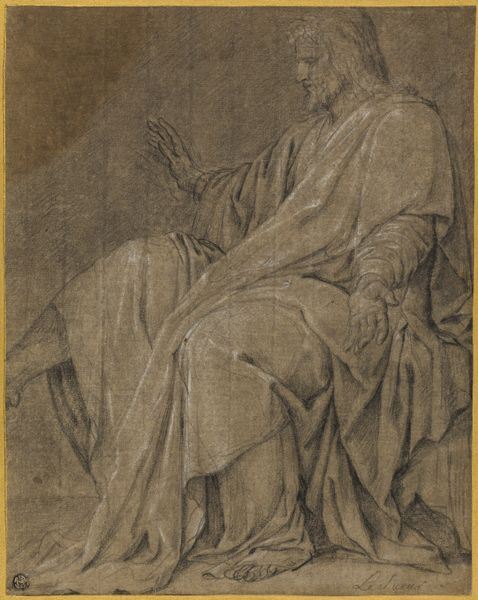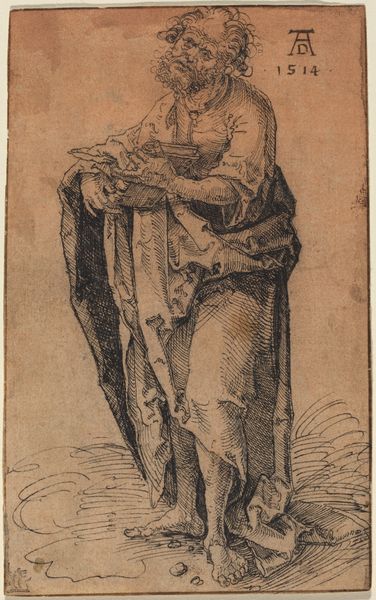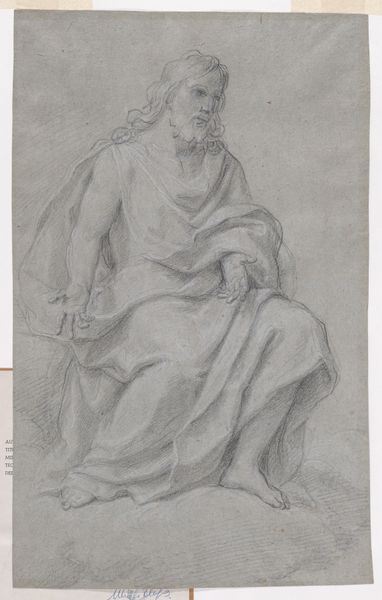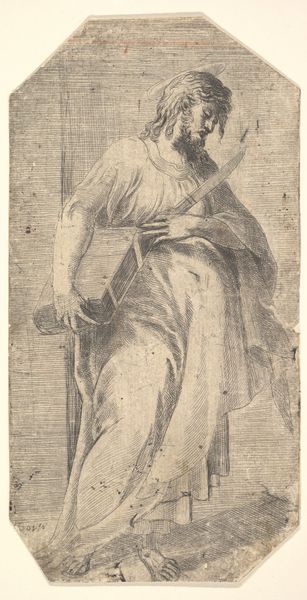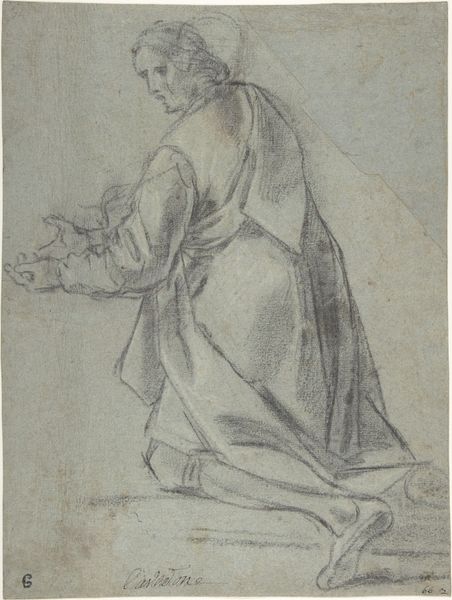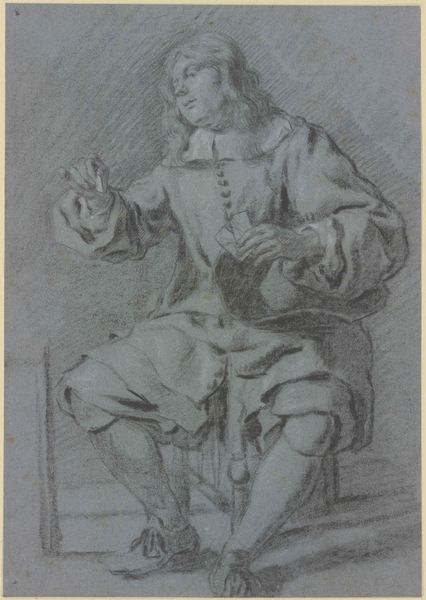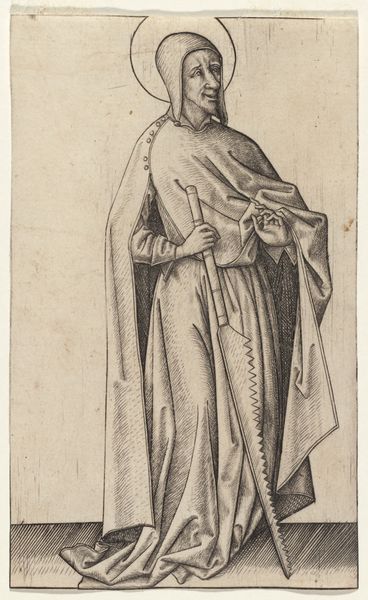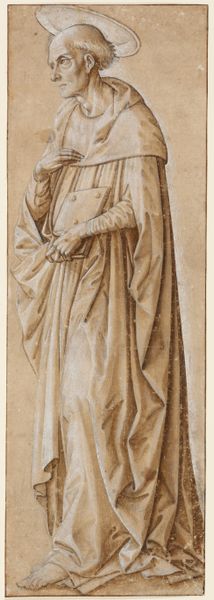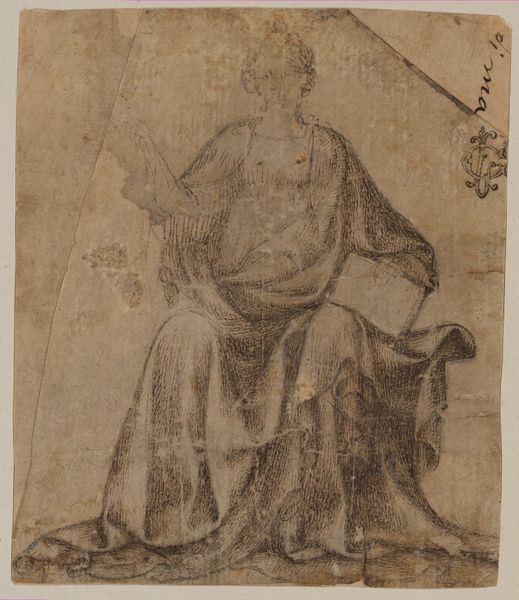
Der Heilige Thomas von Aquin in ganzer Figur an alten Gemäuern sitzend 1862
0:00
0:00
drawing, pencil, chalk
#
portrait
#
drawing
#
16_19th-century
#
pencil sketch
#
pencil
#
chalk
#
portrait drawing
#
history-painting
#
academic-art
#
realism
Copyright: Public Domain
Curator: This is Leopold von Bode's "Der Heilige Thomas von Aquin in ganzer Figur an alten Gemäuern sitzend," a pencil and chalk drawing from 1862. It depicts Saint Thomas Aquinas seated against an ancient wall. Editor: There's a somberness that emanates from this portrait. The limited palette of greys and browns amplifies the stoic, almost melancholic expression on Aquinas's face. The subtle chiaroscuro adds depth. Curator: Consider Bode's social and academic environment during the mid-19th century, where precise representation and historical accuracy were highly valued. This piece probably reflects a trend toward re-examining medieval thought and the roles intellectuals play in shaping society's ideology. Editor: And the materials! The texture achieved using chalk and pencil – almost rough in places, particularly on the robe – contrasts sharply with the smoothness of his face, subtly emphasizing the saint's inner wisdom over outward display. It plays beautifully with line quality. Curator: It’s also worthwhile thinking about how images of intellectuals or philosophers like Thomas Aquinas would circulate in the context of academic debate and knowledge sharing. This piece potentially served to represent an ideal. Editor: But note how that "ideal" is fractured. The dilapidated wall acts as a striking visual metaphor. Even knowledge crumbles, yet the foundational principles, much like those stones, endure. And of course, there's that strong verticality contrasted with the cross shape. Curator: That’s true. The drawing medium provides immediacy – perhaps suggesting a rapid, spontaneous reflection or re-interpretation of traditional figures by a later 19th century mind – someone caught up in rapid industrial change. Editor: I hadn't quite considered that… very interesting. It speaks volumes. A fleeting, precious instance captured permanently within form. The drawing's composition and careful use of materials really emphasize enduring knowledge amidst decay. Curator: It's intriguing to observe how this particular piece exemplifies a tension between material transience and enduring thought, and how that interacts with a wider set of sociopolitical currents. Editor: Indeed. Thank you for those added insights. This focused analysis sheds light on formal techniques and compositional strategy to show the work's layered themes.
Comments
No comments
Be the first to comment and join the conversation on the ultimate creative platform.
